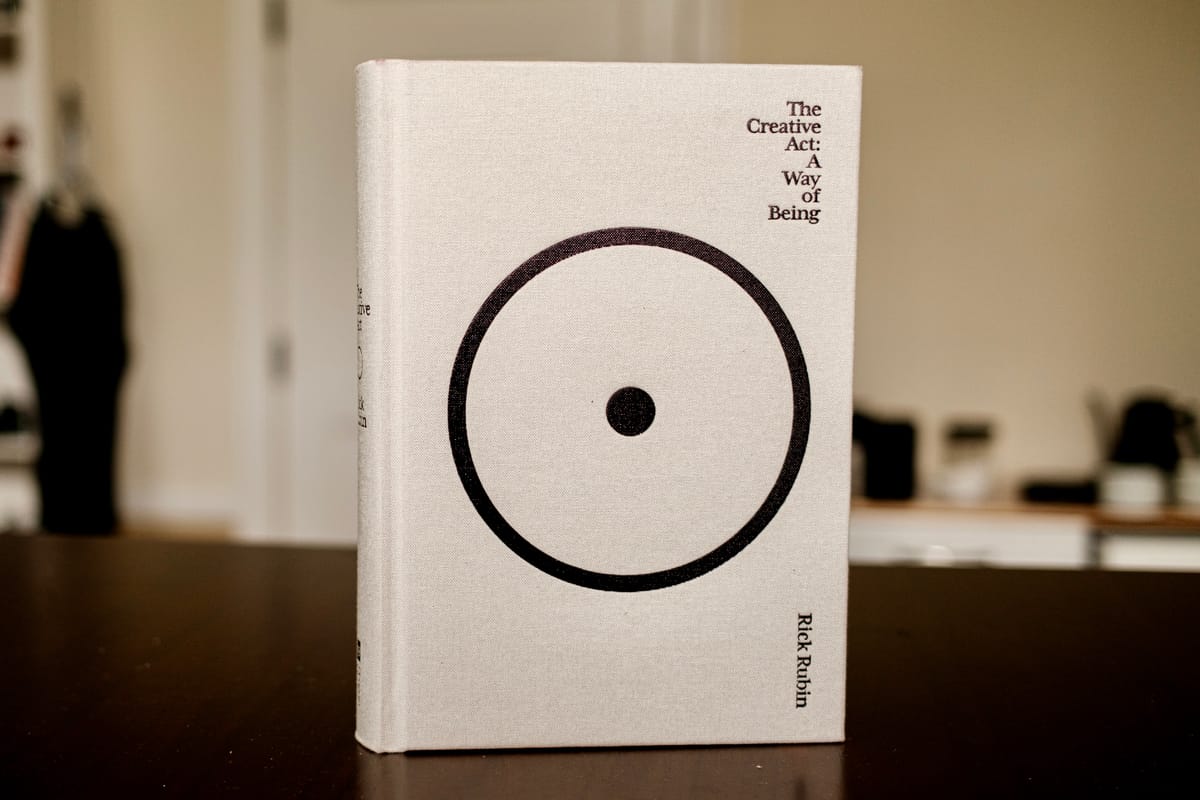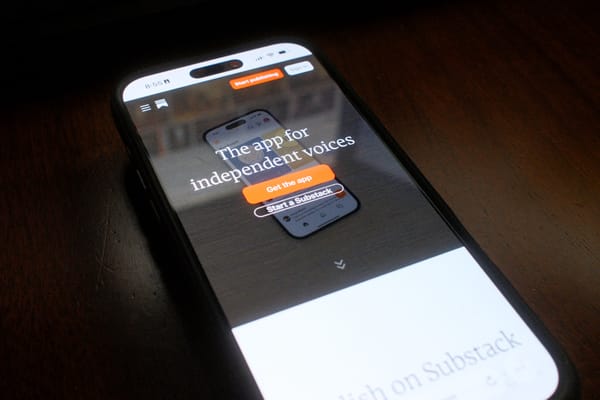Thoughts and Quotes from Rick Rubin's The Creative Act: A Way of Being
Rick Rubin’s The Creative Act: A Way of Being offers thoughtful reflections on creativity that deeply resonated with me, especially in my professional life and creative hobbies. Though I didn’t fully connect with his spiritual approach, Rubin’s individual insights provided valuable inspiration.

This book had been on my reading list for a long time, and I finally got around to reading it. I walked away with mixed feelings, Rick Rubin’s approach to creativity intrigued me, even if I didn't fully resonate with all of it. Although Rubin broadly considers everyone as artists, my own creativity is primarily expressed through photography and videography as a passionate hobbyist. In my professional life as a higher education administrative leader, I frequently lean into creativity for developing new projects and initiatives. Many of the quotes below especially resonated with me in that context.
Rubin approaches creativity with a deeply spiritual, almost naturalistic sense, emphasizing our connection with the universe. While these aspects didn’t particularly speak to me, I felt he was sincerely grasping for deeper meaning and connection, something I believe biblical Christianity provides more robustly. Even if I didn’t fully connect with his worldview, Rubin’s insights offered meaningful inspiration through individual quotes rather than through his broader philosophy. Overall, it’s definitely a worthwhile read.
On Creativity and Art
"Creativity is not a rare ability. It is not difficult to access. Creativity is a fundamental aspect of being human. It’s our birthright. And it’s for all of us...To create is to bring something into existence that wasn’t there before." (p. 1)
"It could be a conversation, the solution to a problem, a note to a friend, the rearrangement of furniture in a room, a new route home to avoid a traffic jam." (p. 2)
"The best work is the work you are excited about." (p. 347)
On Sharing and Inspiration
"If we choose to share what we make, our work can recirculate and become source material for others." (p. 27)
"Look for what you notice but no one else sees." (p. 49)
On Observation and Attention
"When looking for a solution to a creative problem, pay close attention to what’s happening around you. Look for clues pointing to new methods or ways to further develop current ideas." (p. 37)
"These transmissions are subtle; they are ever-present, but they’re easy to miss. If we aren’t looking for clues, they’ll pass by without us ever knowing. Notice connections and consider where they lead." (p. 38)
On Imperfection and Authenticity
"Flaws are human, and the attraction of art is the humanity held in it. If we were machinelike, the art wouldn’t resonate. It would be soulless. With life comes pain, insecurity, and fear. We’re all different and we’re all imperfect, and the imperfections are what makes each of us and our work interesting. We create pieces reflective of who we are, and if insecurity is part of who we are, then our work will have a greater degree of truth in it as a result." (p. 73)
On Listening and Understanding
"Formulating an opinion is not listening. Neither is preparing a response, or defending our position or attacking another’s. To listen impatiently is to hear nothing at all." (p. 111)
On Innovation and Experience
"Innocence brings forth innovation. A lack of knowledge can create more openings to break new ground...Experience provides wisdom to draw from, but it tempers the power of naivete. The past can be a teacher, offering tried and true methods, familiarity with the standards of the craft, awareness of potential risks, and in some cases virtuosity. It lures us into a pattern that absolves us of the opportunity to engage innocently with the task at hand." (p. 121)
"Though experience doesn’t rule out innovation, it can make it more difficult to access." (p. 122)
On Discipline and Structure
"Consider establishing a consistent framework around your creative process. It is often the case that the more set in your personal regimen, the more freedom you have within that structure to express yourself. Managing aspects of your day with military precision allows the artistic windows to be opened in childlike freedom." (pp. 135–136)
On Experimentation and Risk
"To dismiss an idea because it doesn’t work in your mind is to do a disservice to the art. The only way to truly know if any idea works is to test it. And if you’re looking for the best idea, test everything...Perhaps take on the temporary rule that there are no bad ideas. Test them all, even the ones that seem underwhelming or unlikely to work." (p. 158)
"If you’ve truly created an innovative work, it’s likely to alienate as many people as it attracts. The best art divides the audience. If everyone likes it, you probably haven’t gone far enough." (p. 194)
On Commitment and Dedication
"The artist’s job is never truly finished. In many occupations, when we go home, we leave our work behind at the office. The artist is always on call. Even after we get up from hours engaged in our craft, the clock is still running. Creativity is something you are, not only something you do. It’s a way of moving through the world, every minute, every day. If you’re not driven to an unrealistic standard of dedication, it may not be the path for you." (p. 295)
"Once you acquiesce to the demands of the creative life, it becomes a part of you. Even in the midst of a project, you still look for new ideas each day. At any moment, you’re prepared to stop what you’re doing to make a note or a drawing or capture a fleeting thought. It becomes second nature. And we’re always in it, every hour of the day." (p. 296)
On Judgment and Perspective
"After spending thousands of hours working on a piece, it’s difficult to judge it from a neutral place. When someone experiences the work for the first time, after only two minutes they may see it more clearly than you do. In time, almost every artist finds themselves too close to the things they make. After endlessly working on the same piece, perspective is lost. We develop a kind of blindness, doubt, and disorientation may creep in. Judgment is impaired." (p. 335)
On Teamwork
"The synergy of a group is as important - if not more important - than the talent of the individuals." (p. 377)
On Failure
"Failure is the information you need to get where you’re going." (p. 155)




